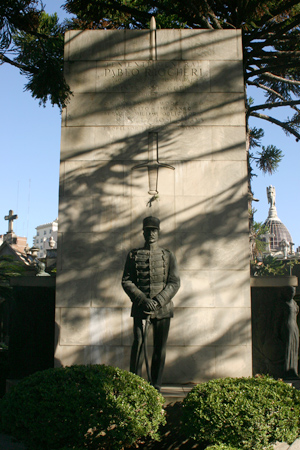
Attracting as much attention for its size as well as its location in the center of the cemetery, the tomb of Pablo Riccheri is a fitting memorial for his deeds. Born in the Province of Santa Fe of Italian immigrant parents, Riccheri dedicated his life to the military. From the age of 15, he rose in the ranks & seemed to be a patriot in the true sense of the word. Riccheri saw the military as a professional organization used to uphold the constitution & defend the nation… not to be involved in politics or used for invasion.
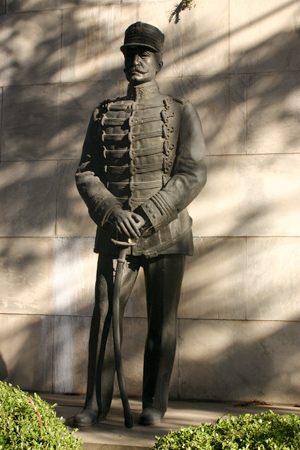
Riccheri traveled frequently to Europe & adopted the best of what he saw in the armed forces overseas. These trips occurred during Argentina’s growth spurt of the 1880s, & by the next decade he had befriended soon-to-be President Julio Argentino Roca. Roca appointed Riccheri as Minister of War (what we would today call the Minister of Defense) & gave him the opportunity to make real change.
Riccheri acquired several hectares of land around the nation & transformed them into training grounds (campos, like the Campo de Mayo near Buenos Aires). He hired mainly German military officers to instruct upper-ranking staff while relying on French engineers & artillery. Riccheri also instituted obligatory military service in 1901 for all males when they turned 20 years old. At the time it helped form a sense of national identity, but after decades of misuse conscription was eliminated in 1994. Riccheri also created the Escuela de Aplicación de Sanidad Militar where new doctors had to live at the main military hospital in Parque Patricios for 3 years to complete their training. His professionalism was remarkable:
“Si las instituciones armadas de un pueblo se mezclan en las contiendas políticas, perdiendo su respetable y noble misión de ser los guardianes tutelares y el respeto a las leyes, siempre bajo la autoridad que marca la Constitución, ¿a quién incumbirá entonces el mantenimiento del orden y el respeto a la ley?”
“If the military institutions of a nation get entwined with political disputes, losing their respectable & noble mission to be the guardians of law, always under the authority outlined by the Constitution, who will then take the responsibility of maintaining order & upholding the law?”
The mausoleum is interesting in its own right. A depiction of Argentina plus a few soldiers flank the statue of Riccheri made by Luis Perlotti:
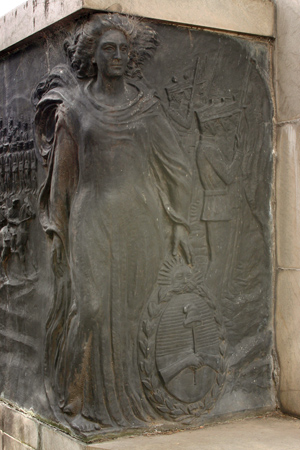
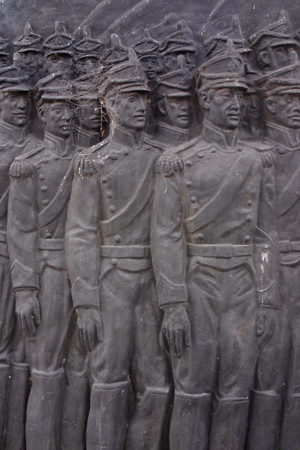
Side relief panels depict Riccheri overseeing the training grounds:
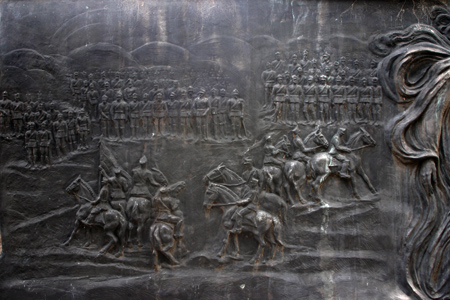
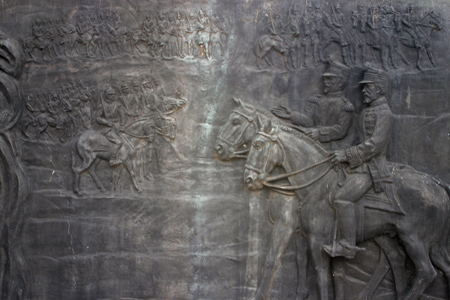
Riccheri passed away in 1938, & the national government appropriated the mausoleum which was orginally in the same spot—that of first President Bernardino Rivadavia. Rivadavia’s ashes had been moved in 1932 to Once where they remain to this day. A small plaque in the rear, relegated to the bottom left corner, reminds visitors of the original occupant of this spot:
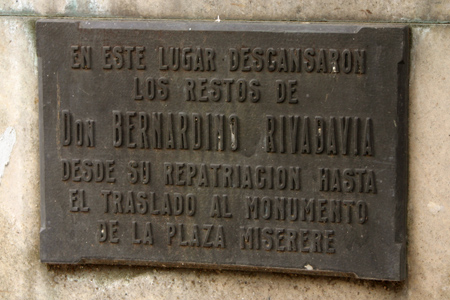
The Archivo General de la Nación has an old photograph of the Rivadavia vault:
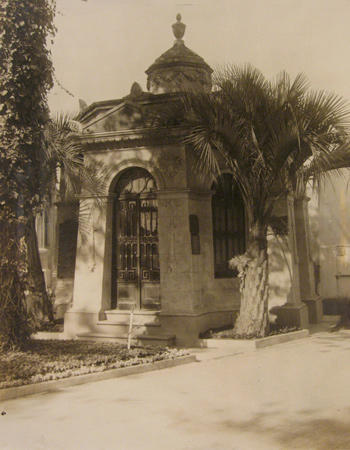
The current vault dates from 1952 & buried inside with Riccheri are other military figures… the national government dedicated this spot to several important leaders. A plaque states that Bernardo de Monteagudo is buried there & supposedly so are Juan O’Brien, Félix de Olazábal, Juan José Quesada, Francisco Fernández de la Cruz & Elías Galván. But Monteagudo is the only one with a plaque:
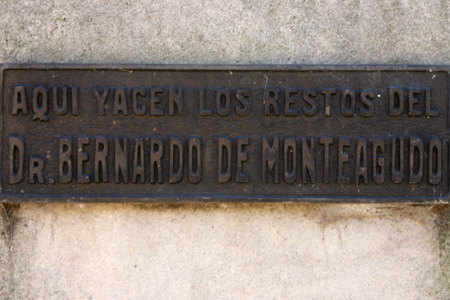
The remains of Bernardo de Monteagudo were transferred to the Cementerio del Oeste his natal province of Tucumán on 24 Jun 2016 (news report in Spanish)… we’ll add photos here as they are provided.
Back in 2003 we spent a a few days at Riccheri’s estancia in San Antonio de Areco, El Ombú. It’s really a gorgeous house. Oddly, and this has probably changed with the influx of tourism, but we were practically the only people there. Even the staff stayed out of the way and it almost felt like it was our place for a couple of days. A very enjoyable stay. But, now, I’m sure it stays fully booked.
I saw some photos of the estancia while reading about Riccheri’s life. It looks fantastic & like a great place to stay. You were lucky I think because I’m sure it’s listed in every guidebook to BA. For that kind of experience everyone will probably have to go further out now.
IN 2016 the urn that contained the remains of Bernardo de Monteagudo were transferred to the province of Tucumán where he was born. I was present in the ceremony as my mother was a relative.
You can see more details in the touch screen that is at the entrance of the cemetery
Hello Helena – Thank you for your comment; I will update the post & add this information. If you have any photos of the ceremony, I would be happy to put them here. Saludos!
Did Pablo Riccheri have any relatives named Bartolome Riccheri?
Hello Curt – I’ve answered you by email, but unfortunately even with a search of the Riccheri genealogy I couldn’t find any relative with the name Bartolomé. If you eventually find out, we’d love to know who this person is! Saludos.
Robert – I have had no luck determining who Bartolome Riccheri was.
That name appears on a brass medallion attached to the stock of a presentation-grade Argentine Model 1891 Mauser carbine. In addition, the initials “BR” appear in gold leave on the receiver of this carbine.
The brass medallion is stamped:
Bartolome Riccheri
Recuerdo Afectuoso de Pablo
Berlin, Setiembre 1893
My assumption is this carbine was given to Bartolome Riccheri by Pablo Riccheri, orthis carbine was given to Bartolome Riccheri by officials of the Argentine Army or government who had fond memories of Pablo Riccheri
Hope this information helps you find out who Bartolome Riccheri was. Thanks!
Curt